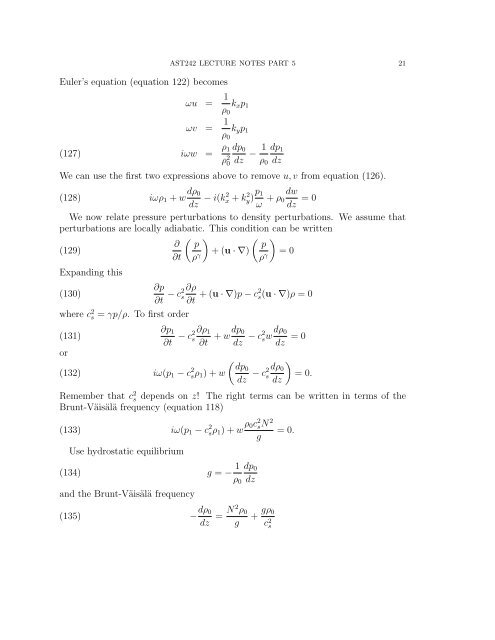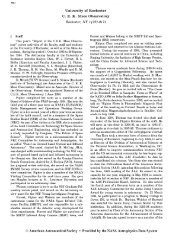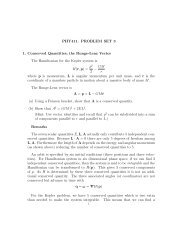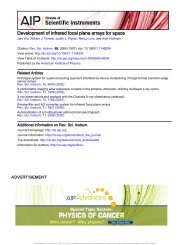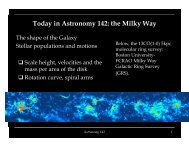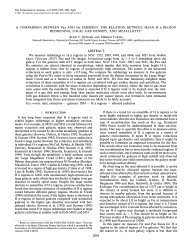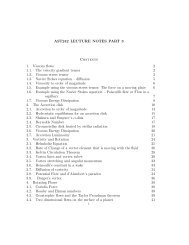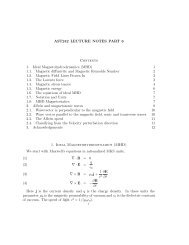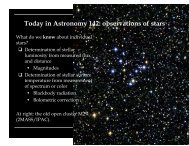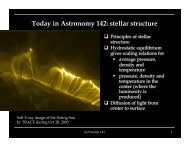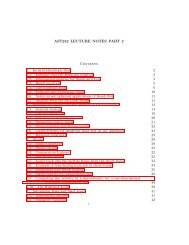AST242 LECTURE NOTES PART 5 Contents 1. Waves and ...
AST242 LECTURE NOTES PART 5 Contents 1. Waves and ...
AST242 LECTURE NOTES PART 5 Contents 1. Waves and ...
- No tags were found...
You also want an ePaper? Increase the reach of your titles
YUMPU automatically turns print PDFs into web optimized ePapers that Google loves.
Euler’s equation (equation 122) becomes<strong>AST242</strong> <strong>LECTURE</strong> <strong>NOTES</strong> <strong>PART</strong> 5 21ωu = 1 ρ 0k x p 1(127)ωv = 1 ρ 0k y p 1iωw = ρ 1 dp 0ρ 2 0 dz − 1 dp 1ρ 0 dzWe can use the first two expressions above to remove u, v from equation (126).(128) iωρ 1 + w dρ 0dz − i(k2 x + ky) 2 p 1ω + ρ dw0dz = 0We now relate pressure perturbations to density perturbations. We assume thatperturbations are locally adiabatic. This condition can be written( ) ( )∂ p p(129)+ (u · ∇) = 0∂t ρ γ ρ γExp<strong>and</strong>ing this∂p(130)∂t − ∂ρc2 s∂t + (u · ∇)p − c2 s(u · ∇)ρ = 0where c 2 s = γp/ρ. To first order(131)or(132) iω(p 1 − c 2 sρ 1 ) + w∂p 1∂t − ∂ρ 1c2 s∂t + w dp 0dz − c2 sw dρ 0dz = 0( dp0dz − c2 s)dρ 0= 0.dzRemember that c 2 s depends on z! The right terms can be written in terms of theBrunt-Väisälä frequency (equation 118)(133) iω(p 1 − c 2 sρ 1 ) + w ρ 0c 2 sN 2Use hydrostatic equilibrium(134) g = − 1 ρ 0dp 0dz<strong>and</strong> the Brunt-Väisälä frequency(135) − dρ 0dz = N 2 ρ 0g+ gρ 0c 2 sg= 0.


